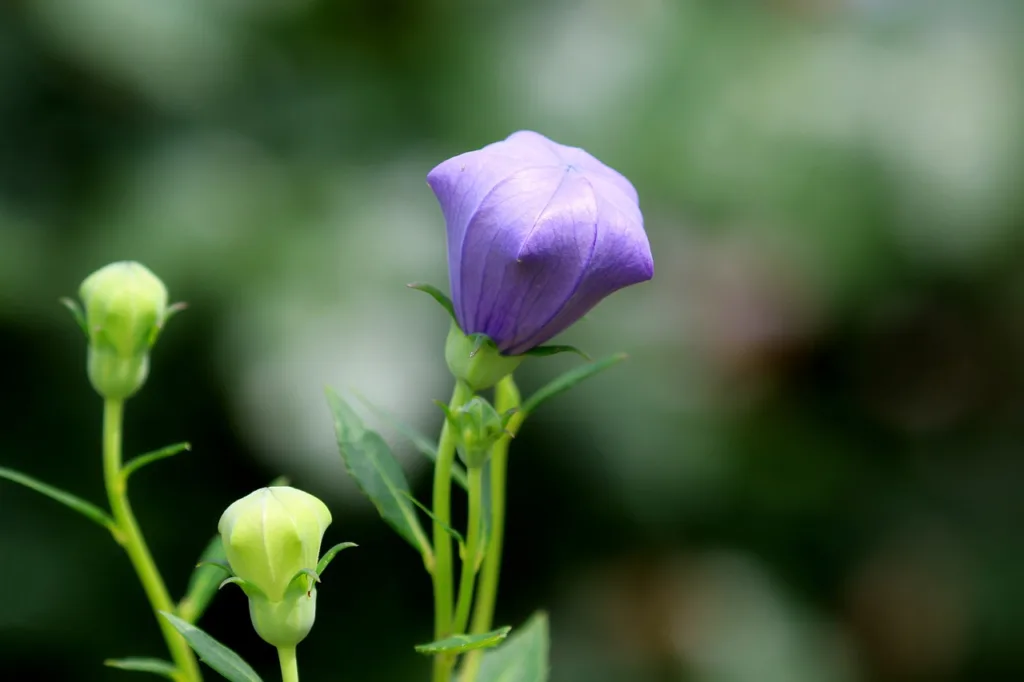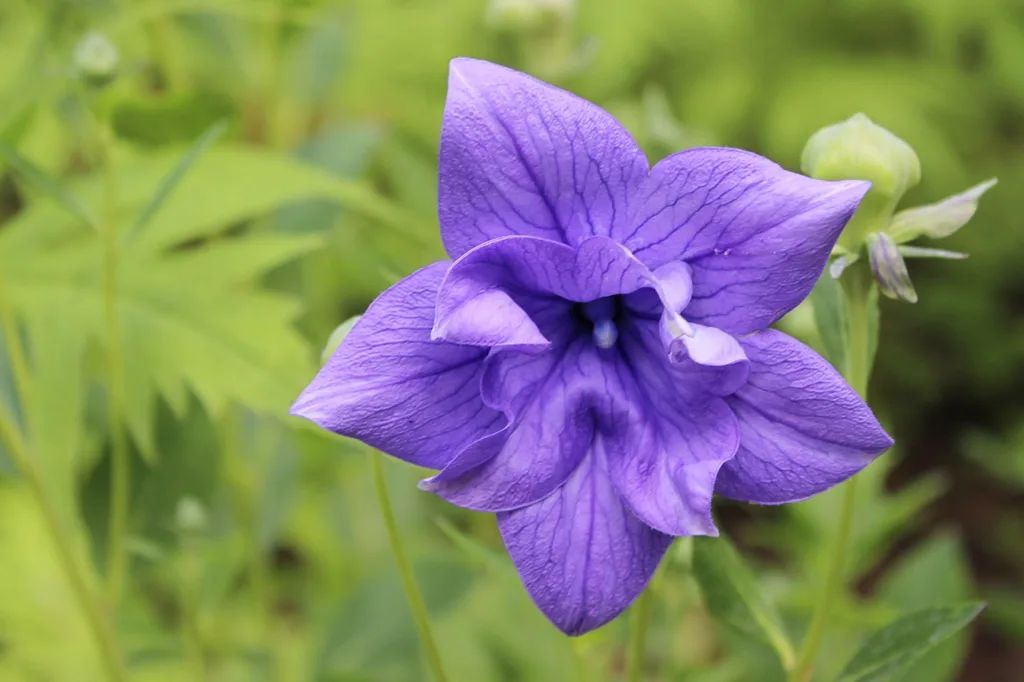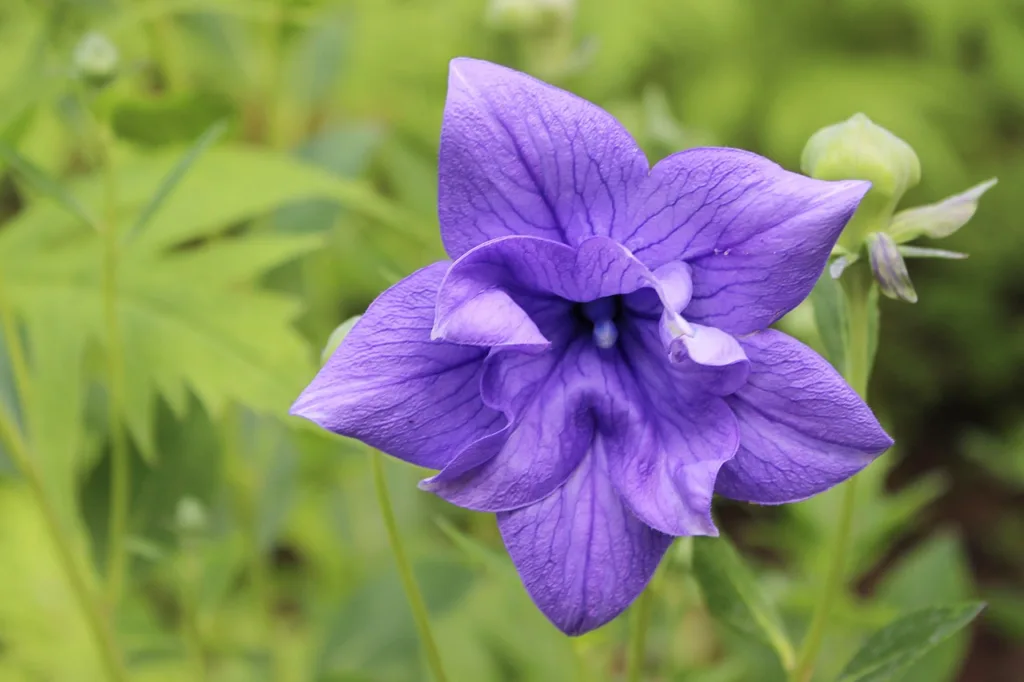Are you looking to add a touch of whimsy and charm to your garden? Look no further than the lovely balloon flower! Also known as Platycodon grandiflorus, this perennial plant features delicate bell-shaped flowers that are reminiscent of hot air balloons, hence its name.
Balloon flowers are relatively easy to care for and can flourish both in the garden and in containers. In this blog post, we will explore all the essential aspects of caring for and growing balloon flowers. From planting to pruning, we’ve got you covered!
Choosing an Ideal Location
Before diving into the care and cultivation of balloon flowers, it is crucial to pick the perfect location for these unique plants. Balloon flowers thrive in full sun to partial shade, so choose an area in your garden that receives at least 6 hours of direct sunlight each day.
Additionally, make sure the soil is well-draining and rich in organic matter. The ideal pH for balloon flowers ranges from 6.0 to 7.0.
| Aspect | Description |
|---|---|
| Scientific Name | Platycodon grandiflorus |
| Common Name | Balloon Flower |
| Family | Campanulaceae |
| Native to | East Asia, including China, Japan, Korea |
| Growth Habit | Herbaceous perennial |
| Flower Characteristics | Balloon-shaped buds that burst open into star-shaped flowers |
| Flower Colors | Blue, white, pink, or purple |
| Bloom Time | Late spring to early summer |
| Sun Exposure | Full sun to partial shade |
| Soil Type | Well-draining, fertile soil |
| Watering Needs | Regular, even moisture, avoid waterlogging |
| Maintenance | Low maintenance, deadhead spent flowers for prolonged blooming |
| Height | Typically 12-30 inches (30-75 cm) |
| Uses | Gardens, borders, cut flowers, herbal remedies |
Types of Balloon Flowers
There are several cultivars and varieties of Balloon Flowers (Platycodon grandiflorus), each with its unique characteristics, such as flower color, size, or growth habits. Some common types of Balloon Flowers include:
- Platycodon grandiflorus ‘Astra Series’: This series features large flowers in various colors such as blue, white, and pink. They have a compact growth habit and are suitable for borders or containers.
- Platycodon grandiflorus ‘Sentimental Blue’: A dwarf variety with blue flowers, ideal for smaller gardens or as a border plant.
- Platycodon grandiflorus ‘Fuji Blue’: This type displays large, vibrant blue blossoms and has a compact growth habit, making it suitable for smaller garden spaces.
- Platycodon grandiflorus ‘Mariesii’: This variety features double-flowered blooms with an eye-catching appearance. The flowers resemble puffy, inflated balloons before they fully open.
- Platycodon grandiflorus ‘Double Blue’: As the name suggests, this cultivar has double, blue, balloon-shaped flowers, adding a unique and striking feature to the plant.
Care and Planting Balloon Flowers
Now that you have identified the ideal spot, it’s time to get your hands dirty and plant your balloon flower seeds! The best time to plant balloon flower seeds is in the spring after the last frost has passed. Follow these steps for successful planting:
- Prepare the Soil: Before planting your balloon flowers, loosen the soil to a depth of 12 inches and amend it with compost or well-rotted manure. This will improve drainage and provide essential nutrients.
- Dig the Hole: Dig a hole that is twice as wide and deep as the root ball of your balloon flower. This will give the roots ample room to grow and establish themselves.
- Planting Depth: Place the plant in the hole, making sure the top of the root ball is level with or slightly above the soil surface. Firmly tamp down the soil around the plant to eliminate air pockets.
- Watering: After planting, give your balloon flower a thorough watering, ensuring the soil is evenly moist. Continue to water regularly, especially during dry spells, to keep the soil consistently moist but not waterlogged.

Watering and Fertilizing
Balloon flowers have moderate water needs. It is important to strike the right balance between keeping the soil moist and avoiding overwatering, which can lead to root rot. Water deeply when the top inch of soil feels dry, and be sure to apply water directly to the base of the plant rather than overhead.
Fertilizing balloon flowers can encourage healthy growth and abundant blooms. You can start by incorporating a balanced, slow-release fertilizer into the soil during the planting process. Additionally, applying a water-soluble, all-purpose fertilizer every four to six weeks during the growing season will provide an extra boost.
Pruning and Deadheading
To keep your balloon flowers looking their best, it is essential to perform regular pruning and deadheading. Pruning involves cutting back the stems and foliage to promote a compact, bushier growth habit. In early spring, before new growth appears, remove any dead or damaged stems. You can also prune back any remaining foliage from the previous growing season.
Deadheading, on the other hand, involves removing spent blooms to encourage continuous flowering and prevent the plant from diverting energy into seed production. Simply snip off the faded flower heads using clean and sharp pruning shears. Deadheading not only keeps your balloon flowers looking tidy but also prolongs their blooming period.
Dealing with Pests and Diseases
Like any garden plant, balloon flowers are not immune to pests and diseases. However, they are generally considered to be relatively pest-resistant. One common pest that may plague your balloon flowers is the slugs. These slimy creatures are most active during cool, damp weather. To deter slugs, you can place beer traps or sprinkle diatomaceous earth around the base of the plant.
Balloon flowers can also occasionally suffer from fungal diseases, such as powdery mildew and leaf spot. To prevent the spread of these diseases, ensure adequate air circulation around the plants by spacing them properly. Watering at the base of the plant and avoiding overhead irrigation also mitigate the risk of fungal infections.
Overwintering Balloon Flowers
In regions with harsh winters, balloon flowers may require some protection to survive the cold temperatures. After the first frost, cut back the stems of your balloon flowers to a height of 4 to 6 inches.
Then, apply a layer of mulch around the base of the plant to insulate the roots and protect them from freezing. The mulch will also help retain moisture during the dormant period.

Can you grow balloon flowers in pots?
Yes, you can grow balloon flowers (Platycodon) in pots or containers. They are well suited for container gardening because of their medium size and relatively shallow root system. Here are some suggestions for growing balloon flowers in pots:
- Container Size: Use a pot that’s 8-12 inches deep with good drainage.
- Potting Mix: Opt for well-draining soil, preferably for flowering plants, or add compost for better soil quality.
- Planting: Place the Balloon Flower in the center of the pot at the same depth as its original container and water it thoroughly after planting.
- Sunlight: Provide 4-6 hours of sunlight daily, either in full sun or partial shade.
- Watering: Maintain consistent moisture without overwatering. Water when the top inch of soil is dry to prevent root rot.
- Fertilization: Use a balanced, slow-release, or water-soluble fertilizer during the growing season following the instructions on the package.
- Maintenance: Deadhead spent flowers to encourage continuous blooming. Lightly prune the plant after the initial flowering for more blooms.
Do balloon flowers bloom all summer?
Balloon flowers (Platycodon grandiflorus) are typically in bloom throughout the summer months. Their flowering period typically begins in late spring or early summer, and they continue to bloom into the latter part of summer. The blooming period can be quite long, especially if you regularly remove faded flowers.
With proper care, which includes ample sunlight, frequent watering, and deadheading to encourage new growth, balloon flowers can continue to bloom throughout the summer months, providing a delightful display of their balloon-like buds and star-shaped flowers. It happens.
Conclusion
There you have it – everything you need to know about caring for and growing balloon flowers. From selecting the ideal location and planting them correctly to watering, fertilizing, pruning, and protecting them during winter, you are now equipped with the knowledge to successfully cultivate these delightful plants.
So, why wait? Bring some cheer to your garden with balloon flowers and watch as they bloom into whimsical beauties!
Now that you are familiar with the ins and outs of balloon flower care, why not share your love for these enchanting plants with fellow gardening enthusiasts?
People Also ask
- How long do balloon flowers last?
Balloon Flowers (Platycodon grandiflorus) typically bloom for several weeks during the summer, with each individual blossom lasting a few days. - What to do with balloon flowers after they bloom?
After the blooms fade, deadhead the flowers to encourage new growth. Pruning after the first bloom may promote additional flowering. - Why is my balloon flower dying?
Common reasons for ailing balloon flowers include overwatering, underwatering, improper sunlight, or poor soil drainage. Addressing these issues may help revive the plant. - What are some facts about balloon flowers?
- Balloon Flowers belong to the Campanulaceae family.
- Their name originates from their balloon-shaped buds before blossoming.
- They’re native to East Asia, including China, Japan, and Korea.
- The flowers come in colors like blue, white, pink, or purple.
- Do balloon flowers need sun or shade?
Balloon Flowers thrive in both full sun and partial shade, benefiting from about 4-6 hours of sunlight daily. - How do you maintain balloon flowers?
- Ensure well-draining soil and moderate watering.
- Deadhead spent blooms for continuous flowering.
- Fertilize during the growing season.
- Prune lightly after the initial bloom to encourage more flowers.
- Protect from extreme conditions like excessive heat or waterlogging.

